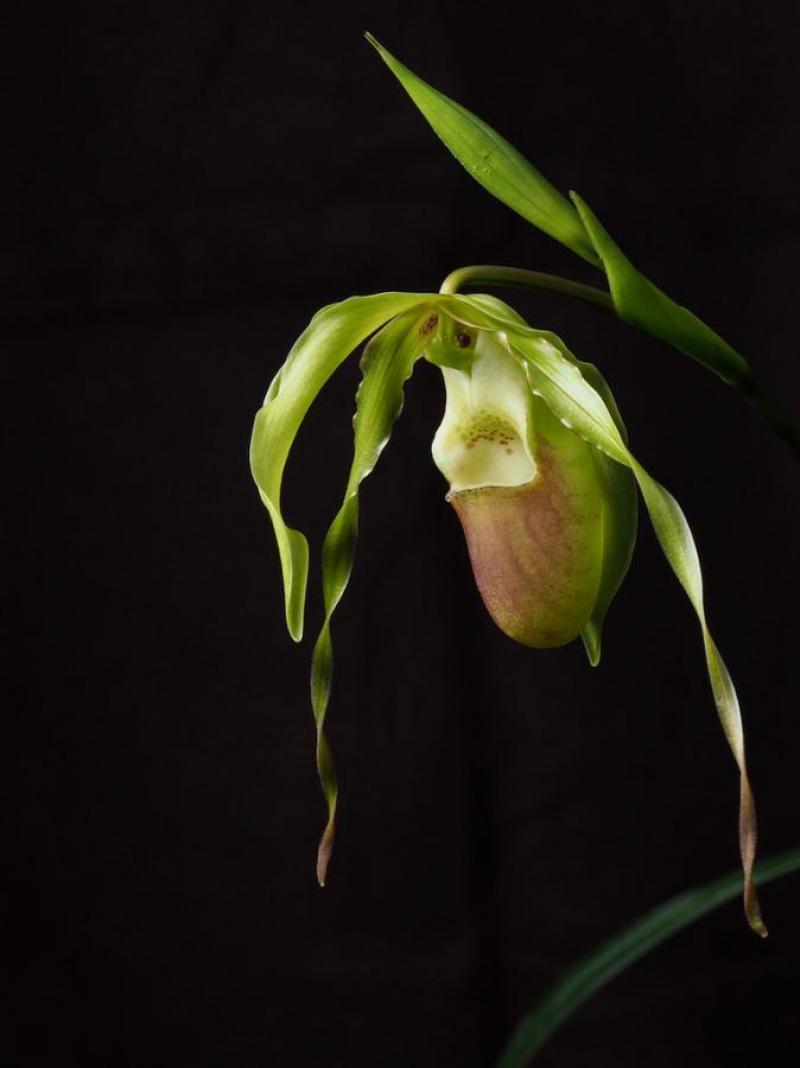Phragmipedium hirtzii
Also known as: Hirtz' Phragmipedium or Phragmipedium hirtzii var. anchicayense Phragmipedium anchicayense Phragmipedium hirtzii var. hirtzii in the subfamily: Cypripedioideae
Native to: Departamento del Huila - Colombia Provincia de Esmeraldas - Ecuador
General Information
Hirtz' Phragmipedium is a medium sized warm growing terrestrial orchid belonging to the sub family Cypripedioideae native to Colombia and Ecuador. It is named after the German Orchid Collector late in the 1900's.
Plant Description
Grows to 0.8-40cm. Each new growth has numerous leathery erect, oblong shaped, terete shaped leaves that grow to 1-25cm long
Care Notes
These orchids grow on the forest floor so are used to rich soil containing plenty of organic matter that is always moist (but not always wet), and prefer constant conditions in terms of humidity, temperature and water supply. They may not be as forgiving as epiphytes in regards to sudden changes in growing conditions so it is wise to ease them into new conditions over a the space of a few days, and repot as infrequently as possible.
Keep an eye on the plants condition regularly as they can decline suddenly if the conditions are not just right. It is more important to keep water supply constant rather than frequent - overwatering often causes rot which can quickly set in, especially in warmer conditions.
These can be grown in shady, moist areas in the garden, supplied they have protection from abrupt changes caused by the elements, e.g. dry winds, frost etc. Being grown around companion plants such as ferns and bromeliads will help build and retain the humidity they require throughout the year.
Climate
Grows at low to high elevations. Rainfall ranges from 10mm to 193mm per day, heaviest in February and lightest in November. Humidity ranges from 82% to 87%, highest in February and lowest in August. Temperature ranges from 17C to 26C, highest in August (18C to 26C) and lowest in September (17C to 24C).
Watering
These orchids prefer a wet-dry cycle between waterings, they should be watered frequently but only when the moisture is approaching dryness, where the pot feels light and/or the media looks dry. Keep an eye on mounted orchids in warm weather as they may dehydrate quickly.
Fertiliser
Apply liquid based fertiliser per recommended directions. They can benefit from a high phosphate fertiliser leading up to flowering season, followed by a high nitrogen fertiliser when new growth appears, and a balanced fertiliser in other times. These orchids can also tolerate slow release fertiliser applied 1-2 pellets per cup (250ml) of media.
Use balanced fertiliser during Spring and Summer. Be sure to flush out excess fertiliser by running water through the media regularly year round. Apply fertiliser regularly at half strength year round. Use a high Nitrogen fertiliser during Spring and Summer. Use a high Phosphorous fertiliser during Summer. Reduce fertiliser when plant is dormant.Potting
Due to the growth nature of these plants they are best mounted onto cork, tree fern slabs, or even trees if the climate suits. Water regularly especially in hot weather.
This plant does well mounted to Stone slabs. Repotting is best done annually.




















